Jazz, in its rich complexity and boundless creativity, has given rise to albums that are not just landmarks in music but also transcendent experiences. This article embarks on a journey through what can be considered the 29 best jazz albums of all time, a collection that brings together era-defining classics and profoundly influential masterpieces.
The list ranges from the deep, soulful resonance of Miles Davis’s “Kind Of Blue” to the spiritually profound narrative in John Coltrane’s “A Love Supreme.” Each album selected marks a critical point in the evolution of jazz, showcasing its incredible spectrum.
From the refined, elegant rhythms of Bill Evans to the dynamic and intricate compositions of Charles Mingus, and the genre-defying experiments of Ornette Coleman, these albums capture the very soul of jazz. They reflect its innate ability to innovate, inspire, and evoke profound emotion.
For both the seasoned jazz aficionado and those newly discovering its charm, this exploration of the best jazz albums of all time is set to be a richly rewarding experience. It promises a journey full of discovery and deep musical appreciation, complementing what you’ve already learned from our article what is jazz music. Alongside this, if you’re curious about specific tracks that have shaped the genre, our article on the 20 best jazz songs provides a curated list of essential tracks from various types of jazz music.
29. Art Pepper – Art Pepper Meets The Rhythm Section 1957
Art Pepper Meets The Rhythm Section,” released in 1957, is a gem in the world of jazz music. This album is a remarkable collaboration between saxophonist Art Pepper and the legendary rhythm section of the Miles Davis Quintet. What makes this album extraordinary is the spontaneity behind its creation. Art Pepper, known for his emotional depth and lyrical playing, was only notified the day before the recording session. Despite this short notice, the chemistry between Pepper and the rhythm section – pianist Red Garland, bassist Paul Chambers, and drummer Philly Joe Jones – is magical.
The album showcases a blend of Pepper’s vibrant alto saxophone with the subtle yet powerful backing of the rhythm section. It includes interpretations of jazz standards and a few originals, each track featuring Pepper’s distinctive, expressive style. “You’d Be So Nice to Come Home To” stands out for its smooth and engaging rhythm, highlighting Pepper’s skill in weaving complex melodies with ease.
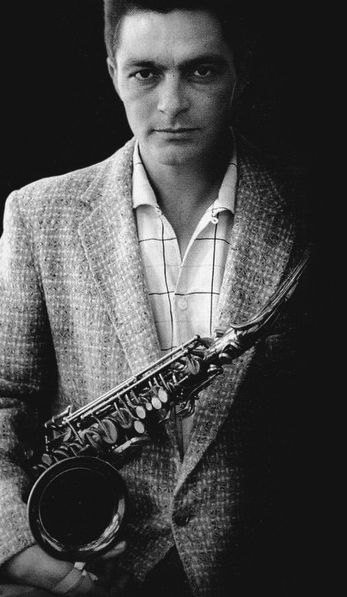
“Art Pepper Meets The Rhythm Section” is not just an album; it’s a story of unexpected brilliance. It’s a testament to the spontaneity and talent of these jazz giants, creating an enduring masterpiece that continues to inspire jazz enthusiasts. Its significance in jazz history lies in its blend of improvisational genius and the seamless union of these remarkable musicians, making it a must-listen for anyone exploring the depths of jazz.
28. Miles Davis – The Birth of The Cool 1957
“Miles Davis – The Birth of the Cool” (1957) is a landmark jazz album that marked a significant shift in the jazz landscape. The album was recorded over three sessions between 1949 and 1950 and released in 1957 by Capitol Records. This record is particularly notable for its departure from the frenetic style of bebop, introducing a more subdued, nuanced form of jazz that came to be known as “cool jazz.”
The album features a nonet, a nine-member ensemble, which was a departure from the big band or small group formats prevalent in jazz at the time. The use of instruments like the French horn and tuba, alongside the more traditional jazz instruments (trumpet, trombone, saxophones, piano, bass, and drums), allowed for rich, complex harmonies and a fuller, yet more subdued sound. The nonet included notable musicians like Gerry Mulligan, Lee Konitz, and J.J. Johnson, among others, with Davis leading on trumpet.
Each track on the album showcases the innovative approach of the group. For example, “Move” opens the album with a bebop-inspired tempo and complex chord changes, while “Moon Dreams” offers a hauntingly beautiful ballad with lush arrangements. “Jeru” presents a laid-back, bluesy tune, and “Venus de Milo” is notable for its ageless, contemplative nature, hinting at the direction Davis would later take with “Kind of Blue.”
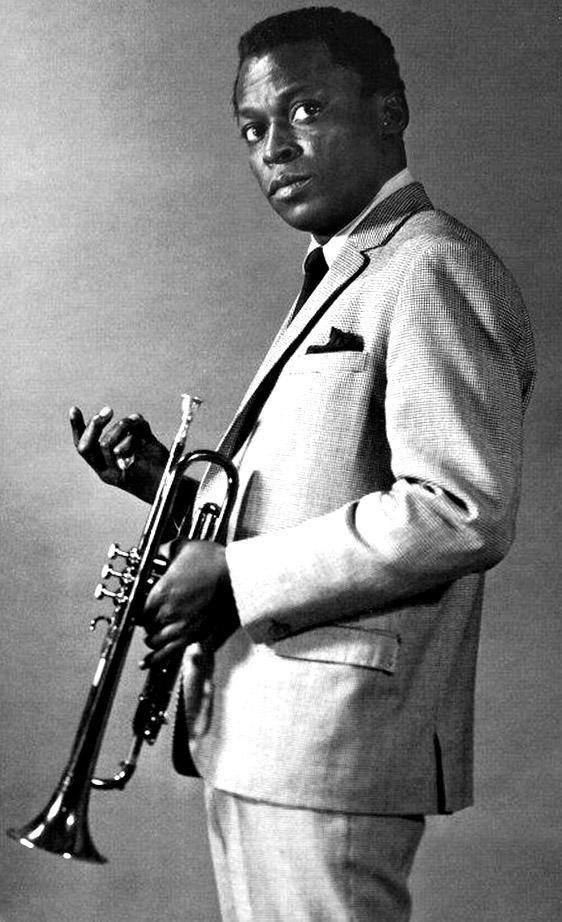
The album’s title, “Birth of the Cool,” reflects the emergence of the cool jazz style, characterized by a more relaxed approach to improvisation, focusing on melodic and harmonic subtlety. Davis aimed to have the instruments mimic the quality of human voices, a goal that is evident in the album’s intricate arrangements and the interplay of instruments.
“Birth of the Cool” not only marked a turning point in Miles Davis’s career but also had a profound influence on the direction of jazz music. It challenged the norms of the jazz world, both musically and socially, as the ensemble included both black and white musicians, which was significant in an era of racial segregation.
This album is a testament to Davis’s vision and creativity, marking a new era in jazz and showcasing the potential of the genre to evolve and embrace new ideas. The impact of this album is still felt today, making it a vital part of any discussion on the most influential jazz albums of all time.
27. Keith Jarrett – The Köln Concert 1975
Keith Jarrett’s ‘The Köln Concert’ (1975) stands as a pinnacle of jazz improvisation and a best-selling triumph in the piano jazz genre. The album, recorded on January 24, 1975, at Cologne’s Opera House, is remarkable not just for its musical brilliance but also for the challenging circumstances under which it was created. Despite suffering from severe back pain and facing the ordeal of playing on an unsuitable, out-of-tune piano, Jarrett delivered a performance of extraordinary depth and creativity.
The recording consists of three improvised segments, each showcasing Jarrett’s unique ability to blend elements of jazz, classical, folk, and other genres into a cohesive and mesmerizing whole. The first part is notable for its lyrical, meditative quality, while the second part is marked by more urgent, rhythmically driven passages. The final part, an encore, offers a fitting conclusion to this monumental performance.
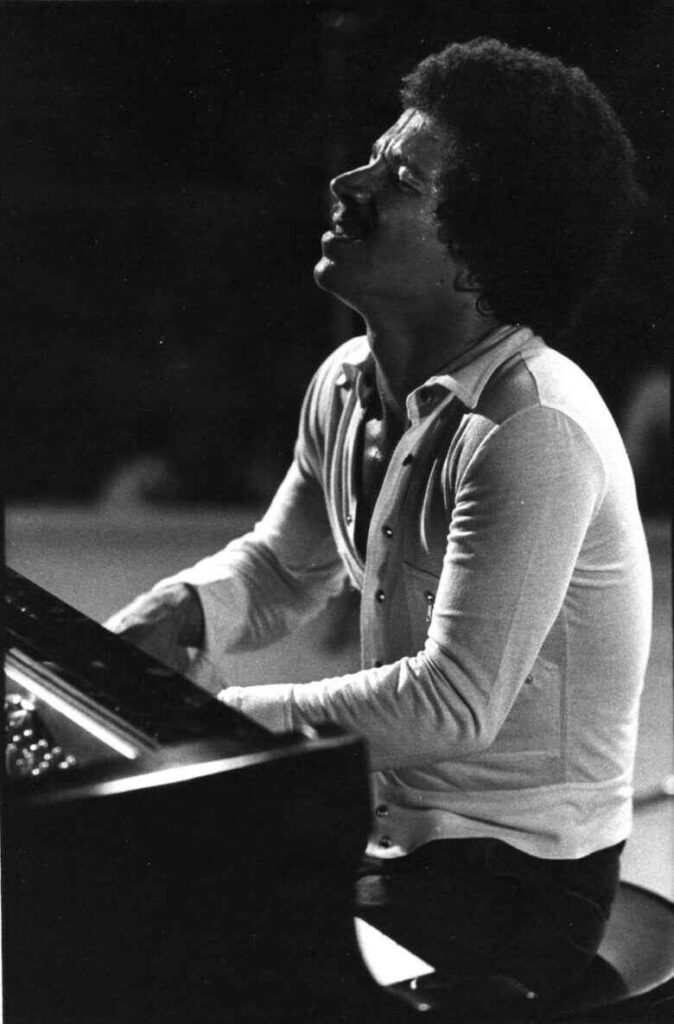
The concert was captured using Neumann microphones and a Telefunken tape machine, adding a rich and warm quality to the recording. This album was not only a milestone in Jarrett’s career but also a significant release for ECM Records, pushing the boundaries of jazz and improvisational music.
What makes ‘The Köln Concert’ even more extraordinary is Jarrett’s reliance on left-hand ostinato patterns to compensate for the piano’s limitations, a technique that added a unique texture to the performance. This concert is not just a display of Jarrett’s virtuosity but also a testament to his resilience and creativity under pressure.
Decades after its release, ‘The Köln Concert’ remains a touchstone in the jazz world, influencing many pianists and music lovers worldwide. Its legacy is reflected in its status as the best-selling solo album in jazz history and one of the best-selling piano albums, with sales around 4 million copies.
26. Dexter Gordon – Ballads 1986
“Dexter Gordon’s album ‘Ballads,’ released in 1991, showcases the saxophonist’s masterful expression in the realm of jazz ballads. Spanning a recording period from 1961 to 1978, this album is a testament to Gordon’s profound ability to convey deep emotions through his saxophone. It features a blend of styles from bop to hard bop, all delivered through his signature saxophone jazz.
The album is notable for its soulful interpretations of classic tunes, allowing listeners to experience the depth and nuance of Gordon’s musicality. His renditions bring out the lyrical and expressive qualities of each piece, highlighting his unique phrasing and tonal richness. The album’s mix of studio and live recordings gives a comprehensive look at Gordon’s versatility and emotive power in both settings.
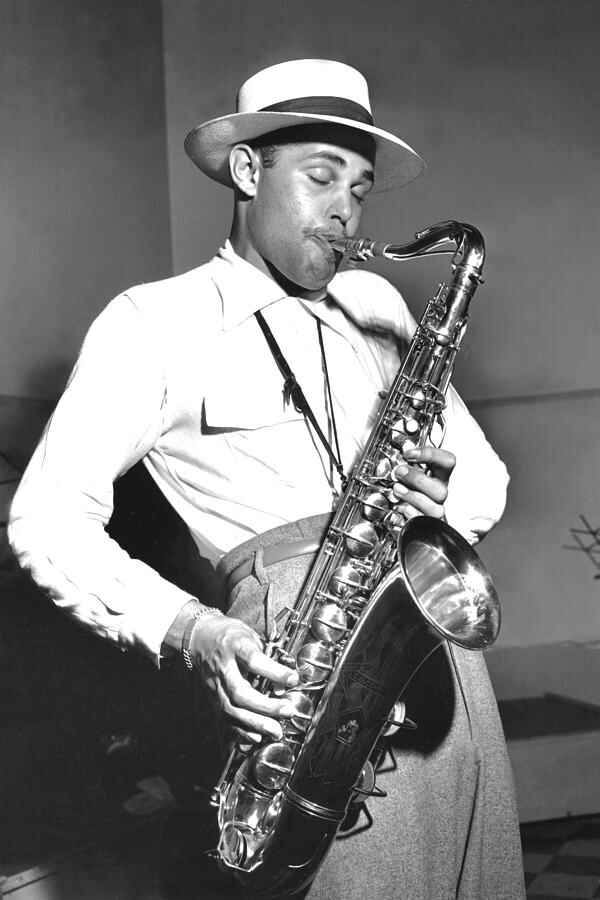
For fans of jazz, and particularly for those who appreciate the beauty of ballads, ‘Ballads’ by Dexter Gordon is an essential listen. It not only offers a collection of beautifully rendered pieces but also serves as a reminder of Gordon’s significant influence and artistry in the jazz genre”.
25. Hank Mobley – Soul Station 1960
Hank Mobley’s “Soul Station,” released in 1960, stands as a masterpiece of the hard bop era in jazz. This album, often celebrated as Mobley’s finest, showcases his unique approach to the tenor saxophone, distinguishing him from his peers. Unlike other tenor players who drew inspiration from Coleman Hawkins, or adopted the luminous sounds of Sonny Rollins and John Coltrane, Mobley developed a distinctive style, earning him the title “middleweight champion of the tenor saxophone” from critic Leonard Feather. His sound was not overly bold nor too gentle, but rather perfectly rounded.
“Soul Station” features a mix of Mobley’s original compositions and standards, brought to life by an exceptional rhythm section consisting of Wynton Kelly on piano, Paul Chambers on bass, and Art Blakey on drums. The synergy among these musicians creates a compelling listening experience, with Mobley’s solos particularly standing out for their inventive and unpredictable nature.
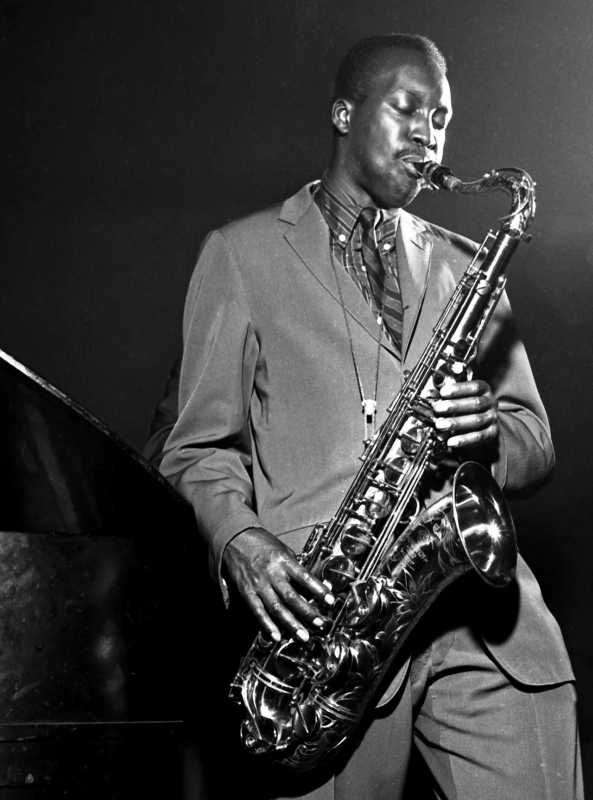
One of the album’s highlights, “This I Dig Of You,” exemplifies Mobley’s ability to weave intricate, melodious lines, driven by Kelly’s swinging piano and Blakey’s dynamic drumming. Another track, “Dig Dis,” showcases Mobley’s relaxed yet daring approach to rhythm, building tension and then effortlessly returning to the groove set by the rhythm section.
The album concludes with a ballad, a choice that highlights Mobley’s skill in crafting solos that are both precise and emotionally resonant. “Soul Station,” more than half a century after its release, continues to be celebrated for its enduring quality and the superb performances of all involved. This record not only marks a high point in Mobley’s career but also stands as a testament to the enduring appeal of the hard bop style in jazz.
24. Sonny Rollins – Saxophone Colossus 1956
Sonny Rollins’ 1956 album “Saxophone Colossus” is a cornerstone in the world of jazz and is often regarded as one of his most significant works. This album captures Rollins’ exceptional talent and innovative approach to the tenor saxophone.
“Saxophone Colossus” features five tracks, each showcasing Rollins’ unique style and rhythmic agility. Notable compositions include “St. Thomas,” which has become synonymous with Rollins’ name, and “Blue 7,” known for its intricate improvisation and sophisticated structure. The album also includes a beautiful rendition of “You Don’t Know What Love Is” and an engaging performance of “Moritat,” also known as “Mack the Knife.”
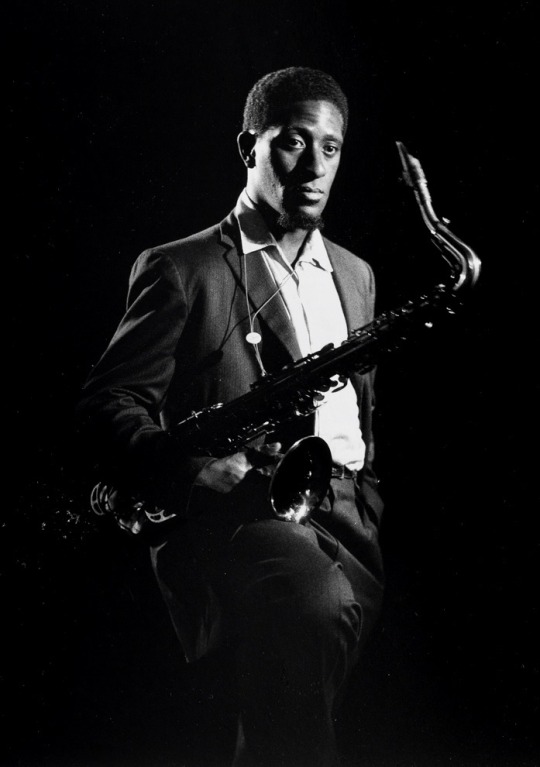
The personnel on this album, alongside Rollins on tenor saxophone, included Tommy Flanagan on piano, Doug Watkins on bass, and Max Roach on drums. Their collective musicianship contributes significantly to the album’s overall excellence.
Critically acclaimed, “Saxophone Colossus” has been described as showcasing a blend of humor, gentleness, and a delicate sense of beauty, all wrapped up in Rollins’ signature swinging style. It’s often cited as one of the classic jazz albums of all time, reflecting Rollins’ status as a true giant in the jazz world. This album is not only a highlight in Rollins’ career but also a defining moment in the hard bop genre, making it an essential listen for jazz enthusiasts.
23. Lee Morgan – The Sidewinder 1964
Lee Morgan’s “The Sidewinder,” released in 1964, is a jazz classic that played a pivotal role in defining the hard bop era. This album, recorded at the Van Gelder Studio in Englewood Cliffs, New Jersey, is known for its engaging blend of bebop, blues, and soul elements, a combination that resonated strongly with listeners and marked a high point in Morgan’s career.
The album opens with its title track, “The Sidewinder,” which stands out for its catchy melody and rhythmic drive. This track, in particular, became a jazz standard and epitomizes the unique fusion of blues and soul in Morgan’s hard-bop style. The ensemble accompanying Morgan includes Joe Henderson on tenor saxophone, Barry Harris on piano, Bob Cranshaw on bass, and Billy Higgins on drums, all of whom contribute to the album’s distinct and memorable sound.
Other tracks like “Totem Pole” and “Gary’s Notebook” further showcase the ensemble’s synergy and improvisational prowess. “Boy, What a Night” and “Hocus-Pocus” also highlight the album’s rhythmic and harmonic complexities, pushing the boundaries of the hard bop genre.
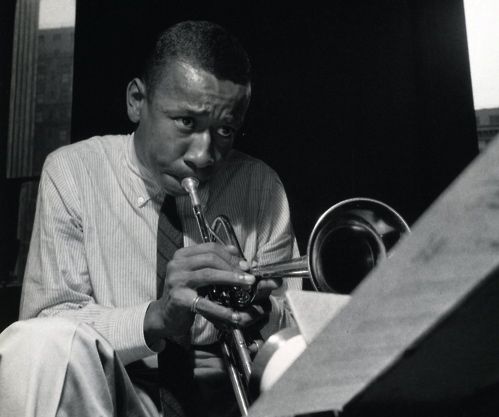
“The Sidewinder” not only achieved commercial success but also received critical acclaim, including a Grammy nomination in 1965. Its influence extended beyond jazz, affecting other music genres and inspiring generations of musicians. The album’s release on the Blue Note label contributed significantly to the label’s legacy, cementing its place in jazz history.
Overall, “The Sidewinder” is celebrated for its soulful improvisations, enduring melodies, and its role in exemplifying the artistic innovation of its time. It remains a vital part of the jazz canon, demonstrating Lee Morgan’s significant impact on the genre
22. Gerry Mulligan – What Is There to Say? 1959.
Gerry Mulligan’s “What Is There to Say?” released in 1959, is a notable album in the jazz genre, particularly in the cool and West Coast jazz styles. This album stands out as the last of Mulligan’s pianoless quartet albums of the 1950s, a unique approach that adds to its charm and historical significance.
Recorded over a span of about a month from December 17, 1958, to January 15, 1959, the album’s lineup featured Gerry Mulligan on baritone saxophone, Art Farmer on trumpet, Bill Crow on bass, and Dave Bailey on drums. The absence of a piano in the quartet lends a distinct texture to the music, allowing for a more open and intimate interplay between the saxophone and trumpet.
The album includes a mix of Mulligan’s compositions and other notable pieces. Tracks like the titular “What Is There to Say?” and “Just in Time” demonstrate the quartet’s ability to deliver memorable melodies with a relaxed yet sophisticated feel. Other highlights include “Festive Minor” and the classic “My Funny Valentine,” which showcase Mulligan’s lyrical approach to the baritone saxophone and the tight-knit interplay of the ensemble.
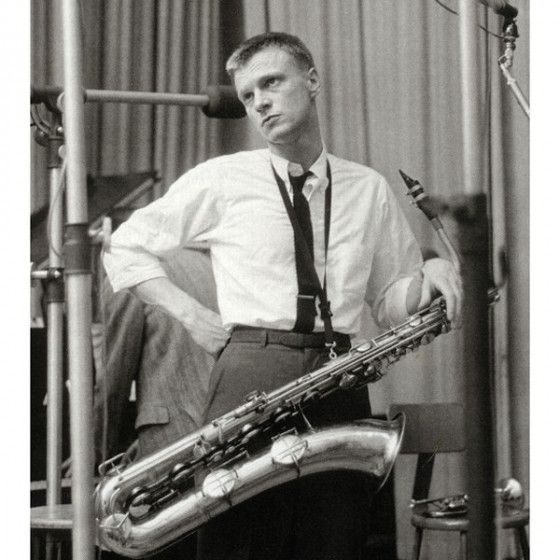
Each selection on the album stands out, offering a mix of rhythmic grooves and melodic inventiveness. The track “Utter Chaos” serves as an excellent example of the quartet’s improvisational skills and musical chemistry.
“What Is There to Say?” is not just a representation of Mulligan’s artistry but also an essential recording that captures the essence of the cool jazz era. It’s a testament to Mulligan’s innovative approach to jazz and remains a significant work in his discography.
21. Cannonball Adderley – Somethin’ Else 1958
Released in 1958, “Somethin’ Else” by Cannonball Adderley is a landmark album in jazz history, revered for its significant contribution to the hard bop and cool jazz styles. This album, recorded on March 9, 1958, is notable for featuring Miles Davis as a sideman, a rare occurrence in his illustrious career. The ensemble also includes Hank Jones on piano, Sam Jones on bass, and Art Blakey on drums, each bringing their unique talents to the mix.
The album’s tracklist includes a blend of original compositions and jazz standards. Songs like “Autumn Leaves” and “Love for Sale” are rendered with exceptional artistry, showcasing the musicians’ ability to interpret and expand upon classic melodies. The title track “Somethin’ Else” and “One for Daddy-O” are standout originals, demonstrating the ensemble’s creative synergy and improvisational skills. Each piece on the album is characterized by its melodic clarity and cohesive group interplay, creating a harmonious and engaging listening experience.
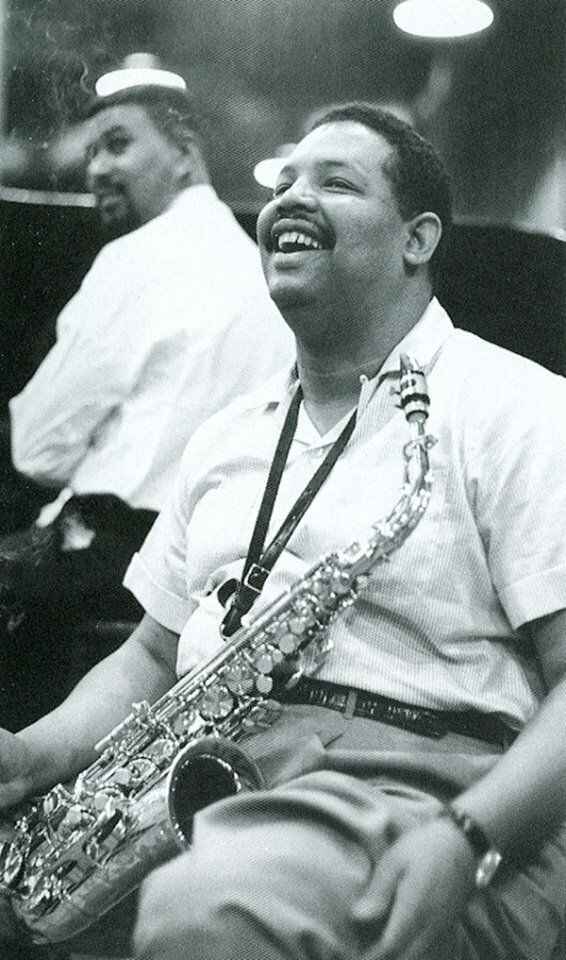
The album’s reception was overwhelmingly positive, and it holds a special place in the jazz canon. The musicians’ interactions on “Somethin’ Else” are not just exemplary in their individuality but also in how they collectively mold and influence each other’s ideas. The album remains a quintessential example of how clear expression and real-time creative interaction can shape an improvisation, making it a timeless classic in jazz history.
20. Pharoah Sanders – Karma 1969
“Karma” by Pharoah Sanders, released in 1969, is a spiritual jazz masterpiece that stands out for its profound impact on the genre. This album is Pharoah Sanders’ third recording as a band leader and is a testament to his unique style that blends spirituality with jazz.
The album is primarily known for its epic 32-minute track “The Creator Has a Master Plan,” co-composed by Sanders and vocalist Leon Thomas. The piece is a significant work in spiritual jazz, echoing the style of John Coltrane’s “A Love Supreme” in its muscular yet lyrical opening. It features Sanders’ distinctive tenor saxophone, along with contributions from significant jazz musicians like Leon Thomas, pianist Lonnie Liston Smith, and others. The track is noted for its mantra-like chant, loping groove, and spiritual lyrics, making it accessible yet profound. The use of diverse instruments like the French horn and flute adds an exotic texture to the jazz soundscape.
The album also includes the track “Colors,” which serves as a meditative epilogue to “The Creator Has a Master Plan.” This track offers a contrast to the intense improvisation of the first piece, providing a serene and contemplative closing to the album.
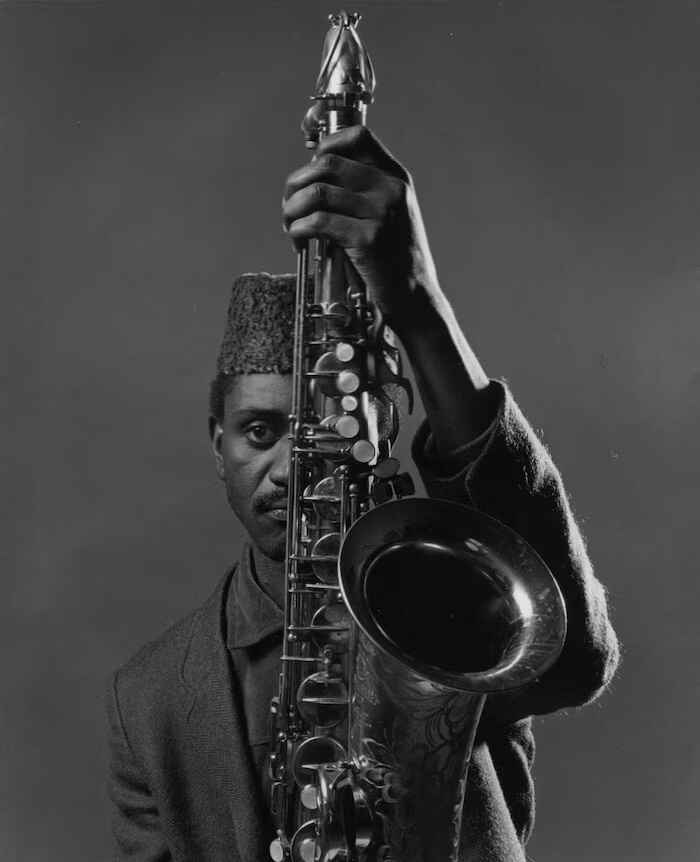
Despite its avant-garde nature, “Karma” achieved mainstream success, resonating with audiences beyond the traditional jazz circles. It topped the Billboard jazz charts for 12 weeks, and its influence can be seen in various genres, including acid jazz and hip hop. The album’s success is a reflection of Sanders’ approach to music, focusing on raw expression and emotional depth rather than technical virtuosity.
“Karma” is a significant work in Pharoah Sanders’ discography and in the history of jazz. Its blend of spiritual themes, experimental sounds, and emotional depth makes it a landmark album, revered by jazz enthusiasts and casual listeners alike.
19. Sun Ra – Lanquidity 1978
“Lanquidity” by Sun Ra, released in 1978, is an album that stands out in the jazz genre for its unique blend of styles and the ethereal quality of its music. Sun Ra, known for his experimental and avant-garde approach to jazz, pushes the boundaries with this album, creating a soundscape that combines elements of funk, R&B, and jazz fusion.
The album consists of five tracks, including the title track “Lanquidity,” which sets the tone for the album with its dreamy and hypnotic feel. Other tracks like “Where Pathways Meet” and “There Are Other Worlds (They Have Not Told You Of)” continue this theme, offering a blend of cosmic sounds and jazz elements. Each piece showcases Sun Ra’s talent for creating music that is both complex and accessible, with a blend of various instruments and sounds that create a unique listening experience.
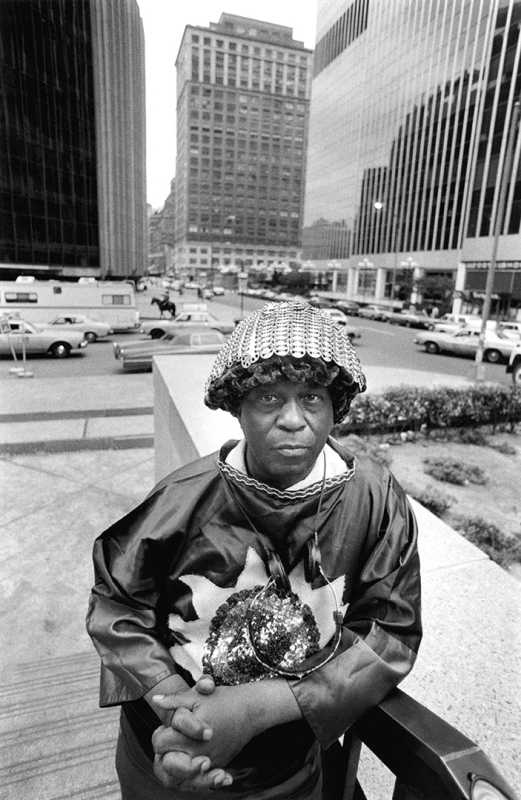
The personnel on “Lanquidity” includes Sun Ra on a variety of instruments such as organ, synthesizer, and piano, along with other members of his Arkestra, contributing with instruments like tenor saxophone, flute, trumpet, and more. This rich combination of instruments adds to the album’s eclectic and otherworldly ambiance.
“Lanquidity” is more than just a jazz album; it’s an exploration of sound and space, reflecting Sun Ra’s visionary approach to music. It’s an essential listen for those interested in the more experimental and cosmic side of jazz.
18. Alice Coltrane – Universal Consciousness 1971
Alice Coltrane’s 1971 album “Universal Consciousness” is a striking fusion of spiritual and avant-garde jazz, reflecting her profound exploration of Eastern musical and spiritual traditions. This album marked a significant moment in Coltrane’s career, especially with her first use of the Wurlitzer organ, influenced by her interest in Indian music and instruments like the harmonium and tambura. This introduction to the organ was pivotal for her, symbolizing a newfound musical independence and freedom.
The album’s tracks, including “Universal Consciousness,” “Battle at Armageddon,” and “Hare Krishna,” showcase a complex interplay of jazz, spirituality, and Eastern musical influences. Her use of the harp and organ is particularly noteworthy, creating a unique and transcendent soundscape. The album features an array of talented musicians, including Jimmy Garrison on bass and Jack DeJohnette on drums, and it utilizes string arrangements, highlighting Coltrane’s innovative approach to composition.
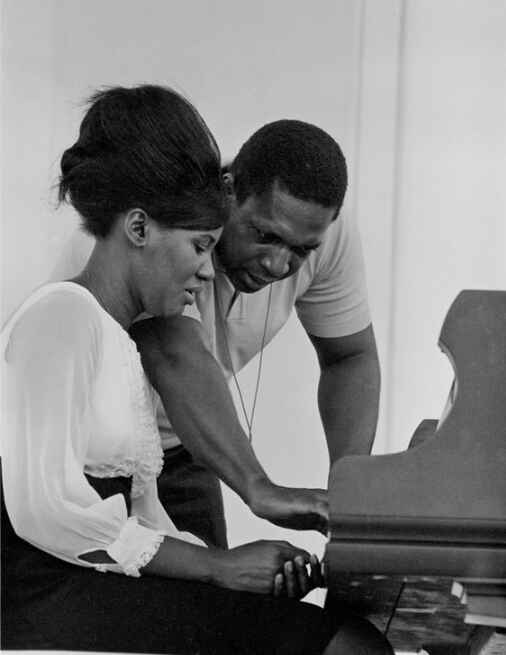
Critically acclaimed, “Universal Consciousness” has been described as a masterpiece and perhaps Coltrane’s finest achievement on record. It stands out for its artistic depth, beautifully blending her musical interests, spirituality, and the memory of her late husband, John Coltrane. The album not only resonates with the essence of the jazz tradition but also anticipates the ‘world music’ movement, making it a groundbreaking and enduring work in Alice Coltrane’s discography.‘
17. Frank Sinatra – Sinatra at the Sands 1966
“Sinatra at the Sands” from 1966 is an iconic live album by Frank Sinatra, backed by the Count Basie Orchestra and conducted by Quincy Jones. Recorded in April 1966 at the Sands Hotel in Las Vegas, this album stands as a monumental representation of Sinatra’s exceptional artistry during the ’60s. Notably, it was Sinatra’s first commercially released live album, capturing the essence of his performance style in a relaxed Las Vegas club setting.
The album features Sinatra performing a variety of his classic songs, each delivered with the signature charm and vocal prowess that defined his career. The tracklist includes timeless pieces like “It Was a Very Good Year,” “Don’t Worry ‘Bout Me,” and “My Kind of Town.” Additionally, the album is interspersed with Sinatra’s engaging stage banter, offering a glimpse into his humor and personality, which contributed as much to his legendary status as his music.

The collaboration with the Count Basie Orchestra, conducted by Quincy Jones, adds a rich, vibrant backdrop to Sinatra’s vocals, showcasing the seamless blend of vocal jazz, traditional pop, and big band styles. This album not only highlights Sinatra’s vocal mastery but also underscores the exceptional musicianship of the Count Basie Orchestra and the skillful arranging of Quincy Jones.
“Sinatra at the Sands” is a significant milestone in Sinatra’s discography, reflecting his commanding presence as a live performer and his ability to captivate an audience with his charismatic delivery and impeccable timing.
16. Chet Baker – Chet Baker Sings: It Could Happen To You 1958
“Chet Baker Sings: It Could Happen To You,” released in 1958, is a landmark album that showcases Chet Baker’s unique blend of vocal and instrumental jazz. This album stands out for its combination of Baker’s soft, melodic trumpet playing and his equally tender vocal performance. Recorded at Reeves Sound Studios in New York, the album features a selection of classic songs written by renowned composers like Richard Rodgers, Lorenz Hart, Jerome Kern, and Johnny Mercer.
The tracklist includes songs such as “Do It the Hard Way,” “I’m Old Fashioned,” “You’re Driving Me Crazy,” and the title track “It Could Happen to You.” Each song is delivered with Baker’s characteristic cool, understated style, making the album a quintessential example of West Coast Jazz. His performances are supported by an adept backing group, with Kenny Drew on piano, George Morrow and Sam Jones alternating on bass, and Philly Joe Jones and Dannie Richmond on drums.
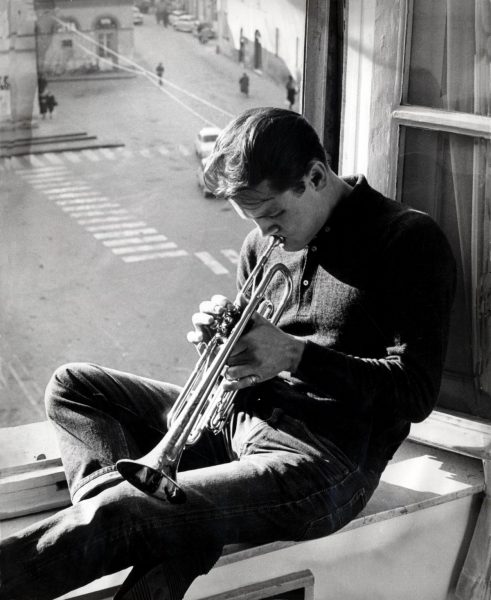
This album is significant not only for its musical excellence but also for highlighting Baker’s dual talents as both a trumpeter and a vocalist. It’s an essential listen for anyone interested in the evolution of vocal jazz and the West Coast Jazz scene of the 1950s.
15. Oscar Peterson – Night Train 1963
“Night Train” by the Oscar Peterson Trio, released in 1963, stands out as a pinnacle of jazz excellence. The trio, led by the incomparable Oscar Peterson on piano, along with Ray Brown on bass and Ed Thigpen on drums, delivers a performance that seamlessly blends technical mastery with accessible melodies. This album is often praised for its ability to introduce new listeners to the world of jazz, thanks to its blend of sophistication and approachability.
Peterson’s performance on the album is a study in graceful, high-speed playing. He tackles standards like “C-Jam Blues” and “Georgia On My Mind” with a flair that highlights his virtuoso skills while maintaining an underlying simplicity. Particularly noteworthy is “Hymn to Freedom,” a stirring piece that showcases the trio’s ability to build a captivating musical narrative, starting softly and building to a powerful crescendo.
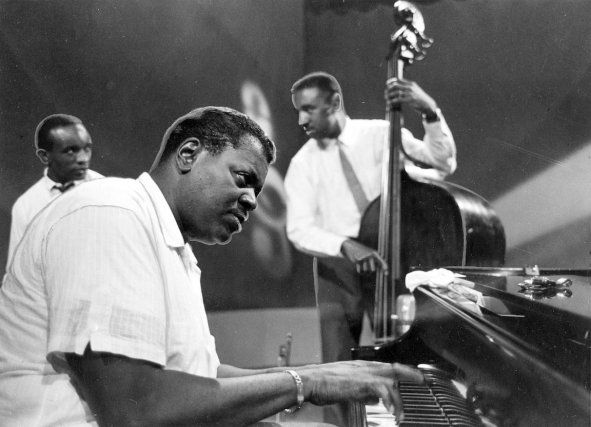
Each track on “Night Train” demonstrates the trio’s talent for taking familiar elements of traditional jazz and fusing them with the improvisational style of free jazz. This results in music that’s not just technically impressive but also emotionally resonant, making the album a must-listen for both jazz aficionados and newcomers alike. The album’s approach to blending intricate musicianship with familiar tunes is a testament to Peterson’s genius as a pianist and as an artist who could make complex music deeply relatable.
14. Duke Ellington – Ellington at Newport 1956
“Duke Ellington at Newport 1956” is a seminal live jazz album that marked a significant resurgence in Duke Ellington’s career. Recorded at the Newport Jazz Festival, this album captures the essence and energy of Ellington’s legendary performance. The album is famous for its vibrant and dynamic renditions of classic Ellington compositions, including “Festival Junction,” “Blues to Be There,” and “Newport Up.”
One of the most notable moments in the album is the 14-minute performance of “Diminuendo and Crescendo in Blue,” where tenor saxophonist Paul Gonsalves’s electrifying 27-chorus solo bridged the two parts of the piece and drove the audience into a frenzy. This performance is often credited with revitalizing Ellington’s career, leading to a resurgence in his popularity that lasted for the rest of his life.
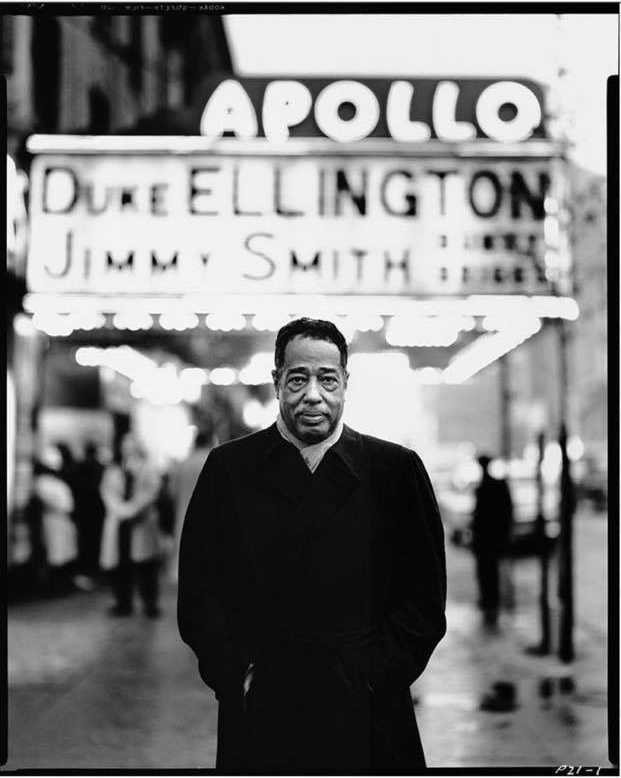
Interestingly, it was later revealed that portions of the original 1956 recording were not entirely live but were studio recordings mixed with live performances and artificial applause. This was due to Ellington’s desire for a better version to be issued on record. In 1999, a reissue used digital technology to piece together the Voice of America live recording and live Columbia tapes to create a clearer version of this historic performance.
“Duke Ellington at Newport 1956” stands as a testament to Ellington’s genius and the power of live jazz music to captivate and energize an audience. It remains a pivotal album in jazz history, capturing a moment where the music transcended its boundaries and reached new heights of excitement and artistry.
13. Billie Holiday – Lady In Satin 1958
Billie Holiday’s 1958 album Lady in Satin is a profound exploration of human emotion, encapsulating the depths of female struggle through Holiday’s voice, which had evolved due to her life experiences. By this time, her voice had changed from its idiosyncratic charm to a sound that was more haunting, yet still sensuous, perfectly suited to the album’s lush orchestral arrangements. This divergence from her usual emphasis on jazz makes Lady in Satin a unique entry in her discography.
The album features a 40-piece orchestra that provides a delicate and graceful backdrop to Holiday’s vocals, a contrast to the more jazz-focused arrangements she was known for. The choice of songs, including shared standards with Frank Sinatra’s In the Wee Small Hours, highlights Holiday’s natural affinity for this type of material. Sinatra’s rendition of these songs may have been warm and pure, but Holiday’s tormented voice brought a different, deeply personal dimension to them.
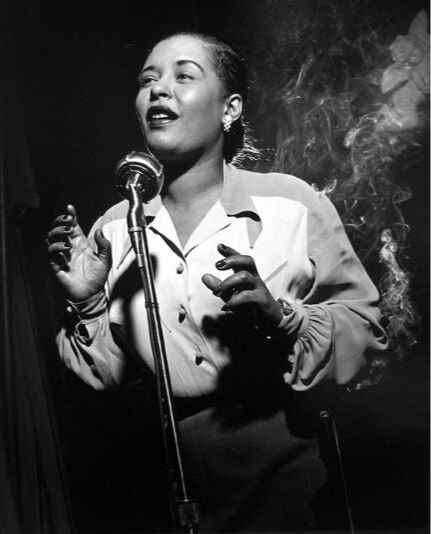
Lady in Satin is remembered as one of Holiday’s most heartbreaking works, and one of the most genuine albums of the era. It’s a beautiful yet tragic testament to Holiday’s enduring impact on music and her ability to convey deep emotions through her unique voice and style.
12. Art Blakey and the Jazz Messengers – Moanin’ 1959
“Moanin'” by Art Blakey and the Jazz Messengers, released in 1959, is a quintessential hard bop album that showcases the exceptional talents of its members. The album is led by drummer Art Blakey, known for his powerful and dynamic playing style. It features an extraordinary lineup including Lee Morgan on trumpet, Benny Golson on tenor saxophone, Bobby Timmons on piano, and Jymie Merritt on bass.
The album opens with the iconic title track “Moanin’,” written by Bobby Timmons, which is renowned for its catchy melody and soulful vibe. Other notable tracks include “Are You Real” and “Along Came Betty,” showcasing Benny Golson’s superb compositional skills. The album is well-rounded with the “Drum Thunder Suite,” a testament to Blakey’s mastery in drumming, and the spirited “Blues March” and the standard “Come Rain or Come Shine.”
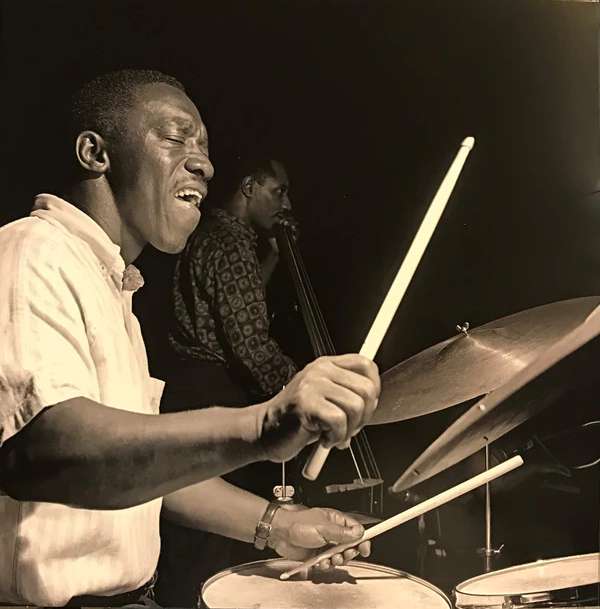
“Moanin'” is revered for its blend of soulful melodies, intricate improvisations, and deep grooves. It represents the pinnacle of the Jazz Messengers’ work and has left a lasting impact on the genre, continuing to influence musicians and attract new listeners to jazz. This album is not just a showcase of individual talent but also a cohesive group effort that defines the hard bop style.
11. Stan Getz and João Gilberto – Getz/Gilberto 1964
“Getz/Gilberto,” the 1964 collaborative album by Stan Getz and João Gilberto, is a landmark in the world of jazz and bossa nova. Recorded over two days in March 1963 in New York, this album brought together the American tenor saxophonist Getz and Brazilian guitarist Gilberto, along with pianist Antonio Carlos Jobim. The album is renowned for its fusion of cool jazz with Brazilian melodies and rhythms, creating a sound that was innovative yet accessible.
One of the album’s most significant contributions to music was the popularization of the bossa nova genre outside Brazil. Its track “The Girl from Ipanema,” featuring Astrud Gilberto’s vocals, became a global hit, winning the Grammy Award for Record of the Year in 1965. This album was the first jazz record to win the Grammy for Album of the Year, marking a significant moment in jazz history.
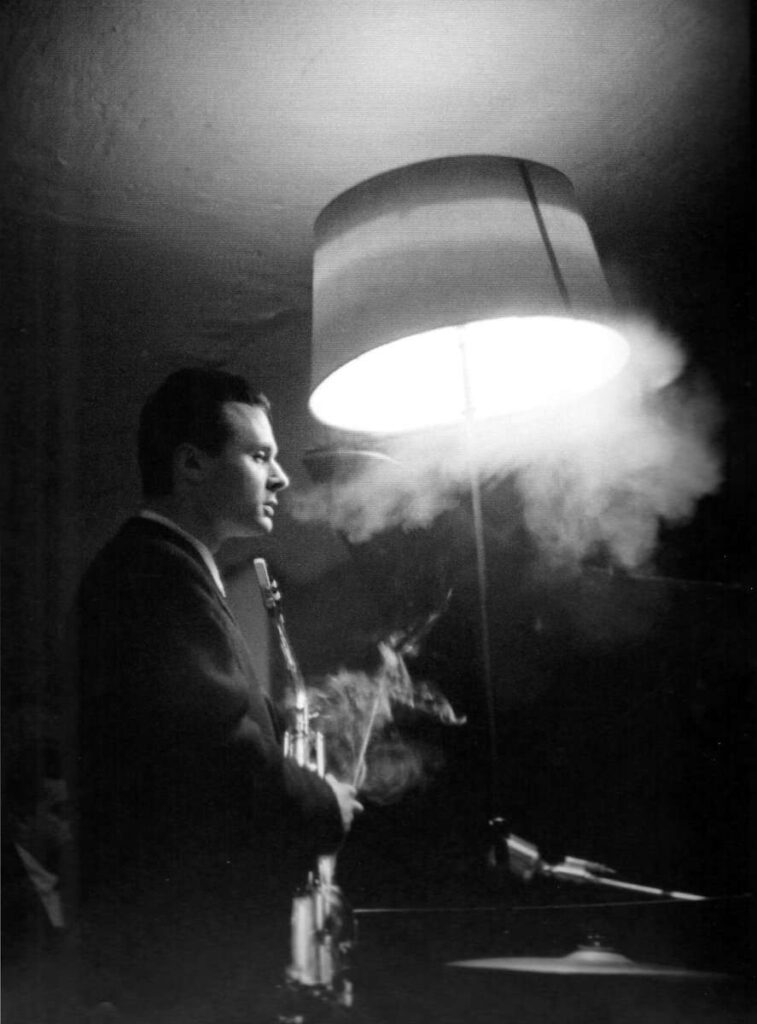
The recordings showcase the talents of each artist, with Getz’s improvisational saxophone lines and the Gilbertos’ subtle vocal style creating a sound that is both relaxed and sophisticated. Jobim’s minimalist piano playing and his contributions as a composer and arranger add depth to the album. The album’s influence extended beyond jazz, impacting the wider musical landscape by blending different cultural elements into a cohesive and appealing whole.
10. Gerry Mulligan – Night Lights 1963
Gerry Mulligan’s 1963 album “Night Lights” is a classic example of West Coast Jazz, known for its cool and emotionally detached style. This album is a testament to Mulligan’s ability to create music that’s both accessible and artistically rich. The album is particularly notable for its emphasis on ballads and laid-back arrangements.
Mulligan, renowned for his baritone saxophone, showcases his talents on this album. He is joined by a skilled ensemble, including trombonist Bob Brookmeyer. Their interplay is especially remarkable on tracks like the covers of “Wee Small Hours” and the self-composed “Tell Me When,” where Mulligan’s nuanced sensitivity shines through. The album also features a more swing-oriented track, “Festive Minor,” which retains the quintessential West Coast Jazz feel.
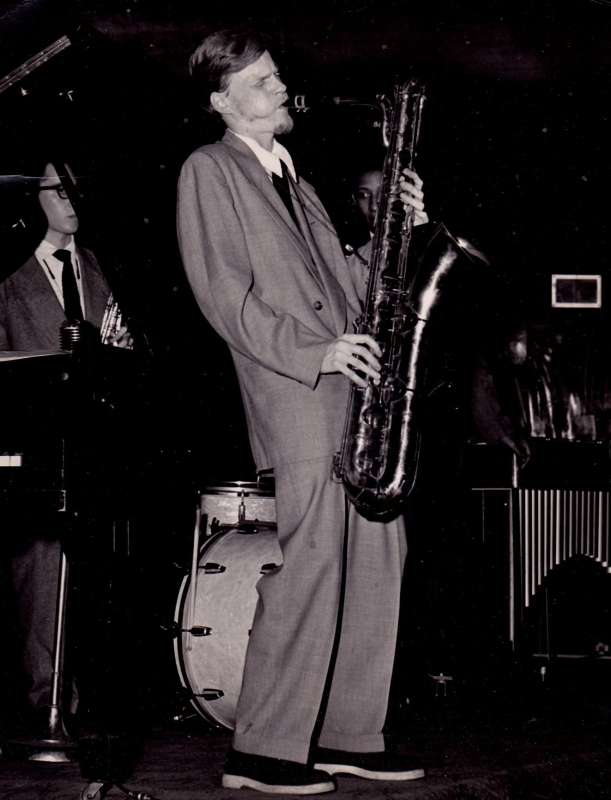
A bonus track on the album is an alternate, more ornate version of “Night Lights,” featuring a string section and Mulligan on clarinet. Despite not pushing the boundaries like contemporaries John Coltrane or Ornette Coleman, Mulligan’s “Night Lights” stands as a classic in the jazz genre, praised for its refined remastering and high-quality production. This album is a must-listen for those who appreciate the subtlety and sophistication of jazz.
9. Eric Dolphy – Out to Lunch! 1964
“Out to Lunch!” by Eric Dolphy, released in 1964, is a seminal work in the avant-garde jazz genre, often lauded as Dolphy’s magnum opus. The album stands out for its innovative approach to jazz, blending elements of traditional jazz with the avant-garde to create something truly unique. Dolphy, who plays alto saxophone, bass clarinet, and flute on the album, is joined by an ensemble of skilled musicians, including Freddie Hubbard on trumpet, Bobby Hutcherson on vibraphone, Richard Davis on bass, and Tony Williams on drums.
The compositions on “Out to Lunch!” are complex and rhythmically diverse, pushing the boundaries of conventional jazz structures. The album’s tracks, such as “Hat and Beard,” “Something Sweet, Something Tender,” and the title track “Out to Lunch,” demonstrate Dolphy’s talent for creating intricate musical arrangements that allow for generous individual freedom. The solos in the album are characterized by their episodic nature, showcasing Dolphy’s ability to weave together disparate musical ideas into cohesive narratives.
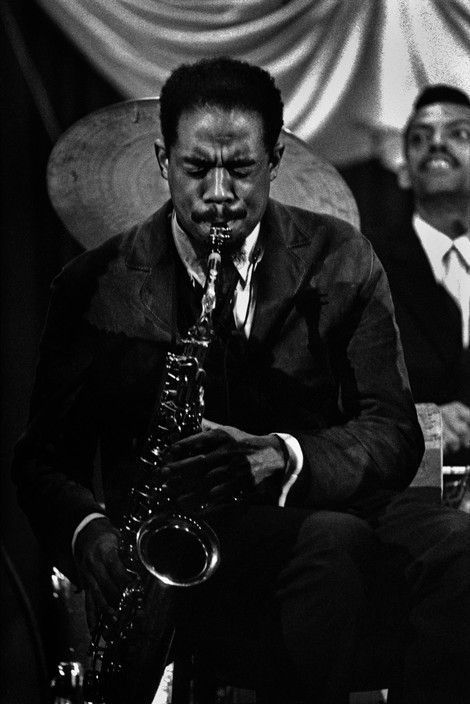
Critics have praised “Out to Lunch!” for its combination of dissonance and melody, its balance of freedom and structure, and its contribution to the evolution of jazz. It’s seen as a revolutionary work that redefined jazz music, inspiring future generations of jazz musicians and composers. The album has been recognized as an essential part of any jazz collection, often compared to other groundbreaking works such as “A Love Supreme” and “The Shape of Jazz to Come.” The album’s influence is evident in the music of later jazz artists who grappled with similar musical contradictions and sought to explore new frontiers in jazz.
8. Dave Brubeck – Time Out 1959
“Time Out” by The Dave Brubeck Quartet, released in 1959, is a groundbreaking jazz album renowned for its innovative use of unusual time signatures. This album pushed the boundaries of jazz music by moving away from the standard 4/4 time and exploring rhythms like 5/4 in the iconic track “Take Five,” composed by Paul Desmond. The album’s opening track, “Blue Rondo À la Turk,” is another standout, blending Turkish folk rhythms with jazz in a 9/8 time signature, highlighting Brubeck’s commanding presence and skillful musicianship.
Despite initial skepticism from some critics, “Time Out” became immensely popular, acclaimed for its experimental approach that was both challenging and enjoyable. The album showcases Brubeck’s talents, particularly in tracks like “Kathy’s Waltz” and “Three to Get Ready.” Its appeal lies in its ability to defy jazz traditions while still maintaining a sense of fun and musical exploration. This blend of innovation and enjoyment, alongside the quartet’s evident chemistry, has cemented “Time Out” as a classic in the jazz canon and a perfect example of the genre’s expansive potential.
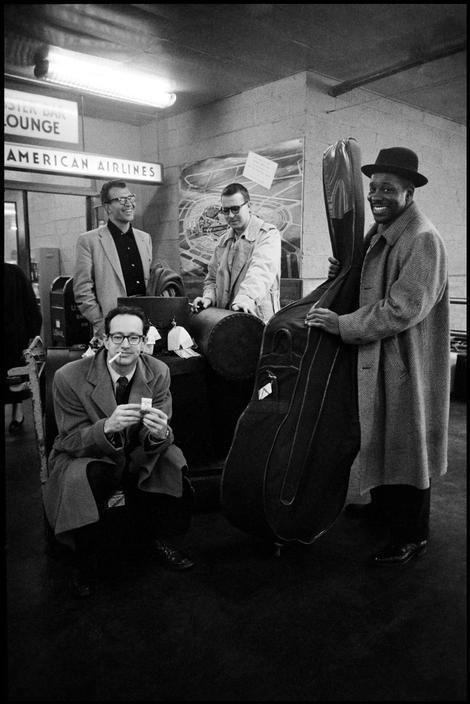
The album was recorded over several sessions from June to August 1959 at the 30th Street Columbia Studios. It not only achieved commercial success, reaching No. 2 on the Billboard pop albums chart, but it also had a profound influence on jazz music, setting a precedent for the use of complex time signatures in the genre. “Time Out” remains a pivotal album in jazz history, demonstrating the genre’s capacity for evolution and experimentation.
7. Ornette Coleman – The Shape of Jazz to Come 1959
“The Shape of Jazz to Come” by Ornette Coleman, released in 1959, is a revolutionary jazz album that redefined the boundaries of the genre. Coleman’s approach to improvisation and composition, often referred to as ‘free jazz,’ challenged the traditional structures and harmonies prevalent in jazz at the time. This album is notable for its lack of piano, which was a radical departure from the norm and gave more freedom to the bass and drums to interact with the horns in unconventional ways.
The album features Coleman on alto saxophone, Don Cherry on pocket trumpet, Charlie Haden on bass, and Billy Higgins on drums. Each musician contributes to the album’s unique sound, characterized by its emotional intensity and spontaneous expression. The tracks, including memorable compositions like “Lonely Woman” and “Peace,” showcase Coleman’s distinctive style of playing, marked by its raw, emotive quality and disregard for conventional tonality.
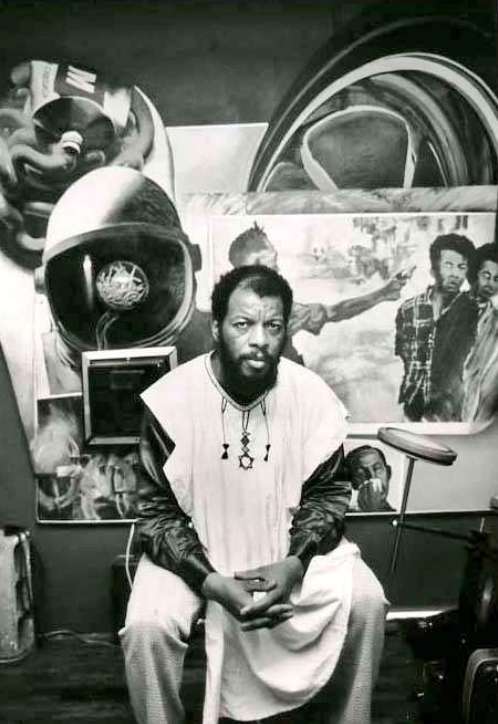
“The Shape of Jazz to Come” is considered a milestone in jazz history, inspiring a generation of musicians to explore new avenues of musical expression. It stands as a testament to Coleman’s innovative spirit and his profound impact on the evolution of jazz music. This album is not just a collection of songs; it’s a manifesto that expanded the possibilities of jazz and continues to inspire and challenge listeners and musicians alike.
6. Thelonious Monk – Genius of Modern Music Volume One
“Genius of Modern Music Volume One” by Thelonious Monk, released in 1952, is a seminal album in the evolution of modern jazz. This collection, recorded between October and November 1947, features Monk’s first recordings as a bandleader and highlights his innovative approach to jazz piano and composition.
The album is characterized by Monk’s unique style, blending elements of bop with his distinct sense of rhythm and dissonance. It showcases Monk’s talent for creating complex, yet memorable melodies and his ability to push the boundaries of traditional jazz harmonies. The recordings include some of Monk’s most celebrated compositions, which have since become jazz standards.
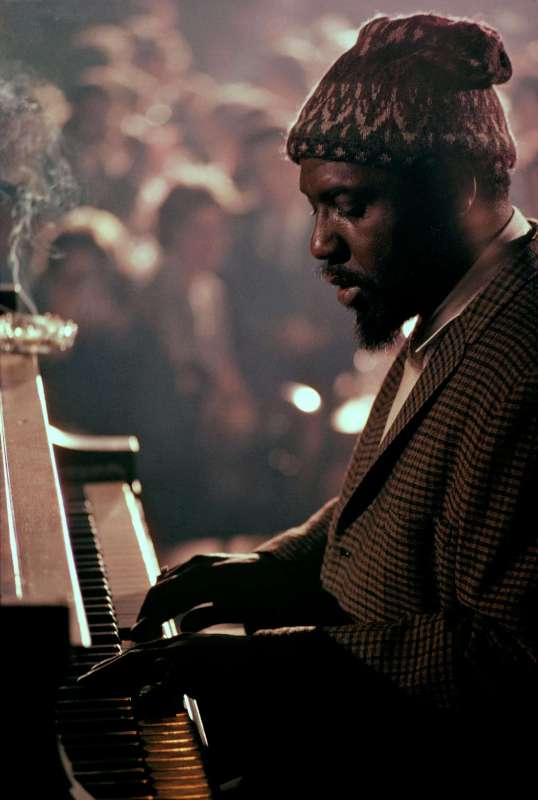
“Genius of Modern Music Volume One” is noted for its historical significance in jazz. Monk’s work on this album laid the groundwork for much of modern jazz, influencing countless musicians and shaping the genre’s development. His use of stride piano techniques, combined with the new sounds of bebop, resulted in a highly personal and groundbreaking musical statement. The album is a testament to Monk’s status as a pioneering figure in jazz, showcasing his innovative spirit and lasting impact on the genre.
5. Miles Davis – Bitches Brew 1970
Miles Davis’ “Bitches Brew,” released in 1970, is a monumental jazz album that reshaped the genre. Recorded over three days in August 1969, the album features a unique approach to music creation. Davis, acting like a conductor, gave minimal instructions to his musicians, fostering a spontaneous and creative atmosphere. This method led to a fusion of sounds, blending rock patterns with hard bop textures and even elements of free jazz.
The album stands out for its innovative use of studio technology. Producer Teo Macero played a crucial role in post-production, creatively editing and adding effects to the recordings. This process was groundbreaking, as it treated the studio itself as an instrument, crafting new musical structures through intensive tape editing.
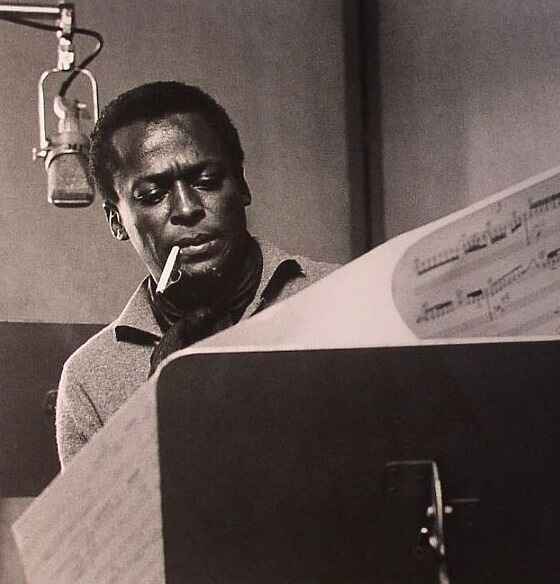
“Bitches Brew” also made a significant impact with its rhythm section. The ensemble included multiple drummers, electric piano players, and bassists, all performing simultaneously. This setup provided a dynamic and expansive foundation for the improvisations, highlighting the album’s rhythmic innovation.
The album’s cover art, created by Mati Klarwein, added another layer of controversy and intrigue. Released during a period of heightened racial tensions in the United States, the artwork’s depiction of intertwined black and white figures was seen as a commentary on these divisions.
“Bitches Brew” not only achieved critical acclaim but also enjoyed commercial success. It reached No. 35 on the U.S. Billboard 200 and was eventually certified platinum, demonstrating its wide-reaching influence. The album remains a pivotal work in jazz history, celebrated for its daring exploration of new musical territories and its lasting impact on the genre.
4. Charles Mingus – Mingus Ah Um 1959
“Mingus Ah Um” by Charles Mingus, released in 1959, is not just an album but a historical artifact in jazz. Celebrated for its exceptional sound quality, the album stands out in the jazz canon, especially for its big, deep soundstage and impactful audio depth. The album is a part of the National Recording Registry, reflecting its cultural significance.
Recorded in May 1959, the album was Mingus’s debut for Columbia Records. It’s a vibrant collection that showcases Mingus’s talents as a bassist and a composer. The album features styles like Hard Bop, Post-Bop, and Progressive Jazz, making it a diverse and rich experience. The ensemble included notable musicians like John Handy on saxophone, Booker Ervin, and Dannie Richmond on drums, contributing to the album’s dynamic sound.
Songs like “Better Git It in Your Soul,” “Goodbye Pork Pie Hat,” and “Fables of Faubus” are not just tunes but stories, offering a glimpse into Mingus’s world. The album’s historical and cultural context, combined with Mingus’s creative genius, makes it a standout work.
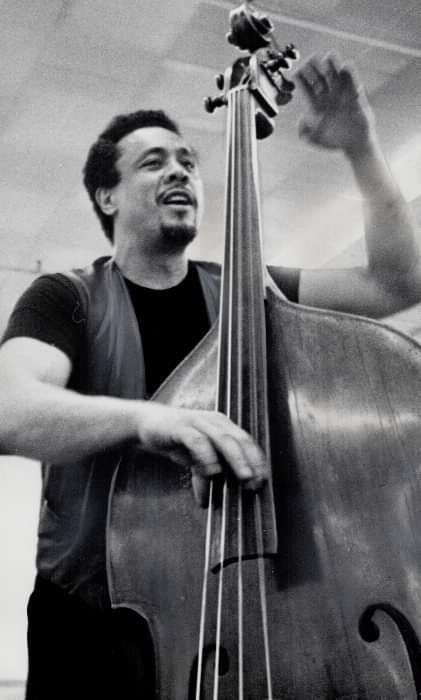
This album is highly regarded and has been reissued multiple times, including a special 50th-anniversary edition by Sony’s Legacy Recordings. The reissues often include additional tracks and alternative takes, offering a deeper insight into Mingus’s creative process.
“Mingus Ah Um” is a monumental work in the jazz genre, encapsulating the essence of Charles Mingus’s musical vision and the spirit of an era.
3. Bill Evans – Sunday at the Village Vanguard 1961
“Sunday at the Village Vanguard” by the Bill Evans Trio, released in 1961, is a landmark in the jazz genre, renowned for its emotional depth and musical innovation. The album, recorded live at the Village Vanguard in New York City, features Bill Evans on piano, Scott LaFaro on bass, and Paul Motian on drums. This trio, through their intimate and dynamic interplay, pushed the boundaries of the traditional jazz trio format.
The album is a blend of modal music, post-bop, and piano jazz, demonstrating the trio’s versatility and technical prowess. Notable tracks include “Gloria’s Step,” “My Man’s Gone Now,” and “Solar,” each showcasing the unique chemistry and conversational style of playing that Evans, LaFaro, and Motian were known for. The performance is characterized by its subtle, nuanced approach, with each member contributing equally to the overall sound.
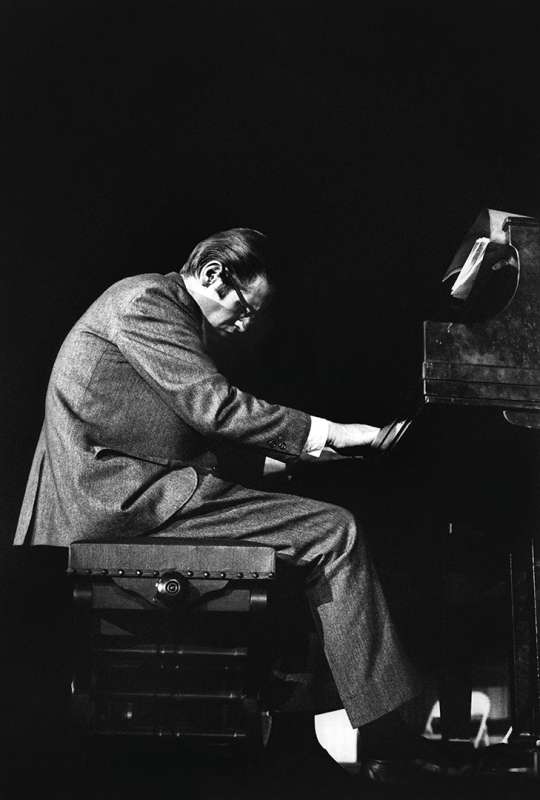
The album’s release was significant in the jazz world for capturing the essence of live performance and the spontaneous creation of music. It’s not just the technical skill of the musicians that makes this album a masterpiece, but also the emotional expression that permeates the performance. The recording is also notable for its excellent sound quality, bringing the listener into the heart of the Village Vanguard, experiencing the music as if they were there.
“Sunday at the Village Vanguard” is more than just an album; it’s a moment in jazz history that continues to inspire and influence musicians and listeners alike. Its legacy is a testament to the enduring power and beauty of jazz music.
2. John Coltrane – A Love Supreme 1965
“A Love Supreme” by John Coltrane, released in 1965, stands as a monumental work in jazz history, often hailed as Coltrane’s masterpiece. This album is an exquisite reflection of Coltrane’s spiritual journey, expressed through his innovative jazz compositions. Recorded with his classic quartet, including McCoy Tyner on piano, Jimmy Garrison on bass, and Elvin Jones on drums, the album encapsulates a unique blend of avant-garde jazz, free jazz, modal music, and post-bop styles.
The album consists of a four-part suite: “Acknowledgement,” “Resolution,” “Pursuance,” and “Psalm.” Each part contributes to the overarching theme of spiritual and musical exploration. Coltrane’s performance in “A Love Supreme” is not just a display of technical mastery but also an emotional and spiritual outpouring, often described as a musical representation of a prayer or meditation.
Interestingly, an alternative version of “Acknowledgement” was recorded with additional musicians, including tenor saxophonist Archie Shepp, but Coltrane preferred the quartet version with his chant, “a love supreme,” which became a defining feature of the album.
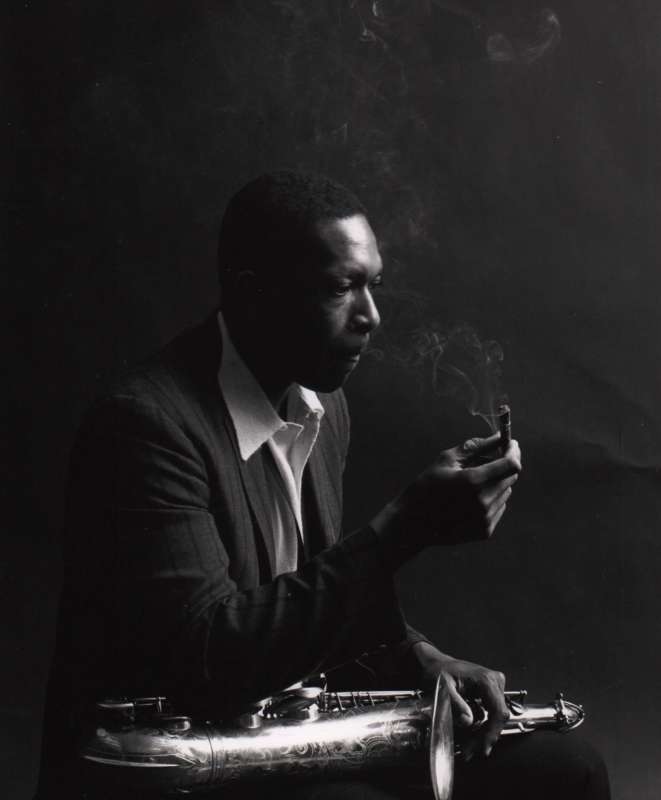
“A Love Supreme” was met with widespread acclaim upon its release and has since been recognized for its deep cultural and historical significance. By 1970, it had sold an impressive 500,000 copies, a significant achievement given Coltrane’s usual sales figures. The album has been influential not only in jazz but also across various music genres, impacting artists like Carlos Santana and bands like U2. Its manuscript is included in the Smithsonian Institution’s National Museum of American History, and the album itself has been preserved in the National Recording Registry for its artistic importance.
This album is more than just a collection of jazz compositions; it is a profound expression of Coltrane’s spiritual quest and a landmark in the evolution of jazz music.
1. Miles Davis – Kind Of Blue 1959
“Kind of Blue” by Miles Davis, released in 1959, is not just an album but a revolution in jazz. It’s widely celebrated as one of the greatest jazz albums of all time. Davis, with his extraordinary vision, ventured into modal jazz, moving away from the complex chord progressions of bebop to simpler, yet profound scales and melodies.
The album opens with the mesmerizing “So What,” setting a tone of cool, understated elegance. Each track, including “Freddie Freeloader,” “Blue in Green,” and the hauntingly beautiful “Flamenco Sketches,” unfolds as a masterpiece of improvisation and mood. The musicians, including John Coltrane and Cannonball Adderley on saxophones, Bill Evans and Wynton Kelly on piano, Paul Chambers on bass, and Jimmy Cobb on drums, contribute their unique genius, making “Kind of Blue” a showcase of collaborative brilliance.
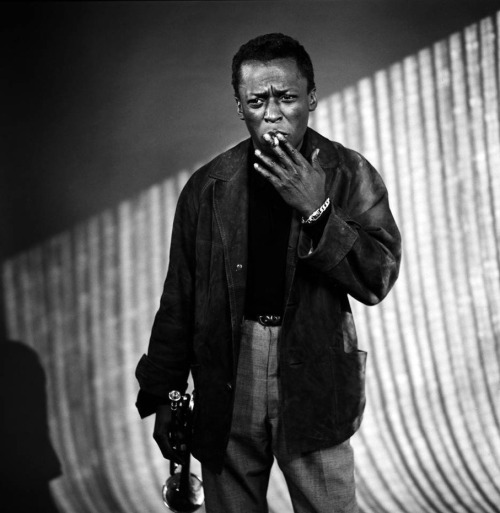
This album’s impact transcends jazz; it’s a fundamental musical text that influenced various genres. Its sales exceeded expectations, becoming a staple in any jazz collection. “Kind of Blue” is an eternal testament to Davis’s innovative spirit and the expressive power of jazz. It remains a guiding light for jazz enthusiasts and musicians alike, encapsulating the essence of improvisational music.
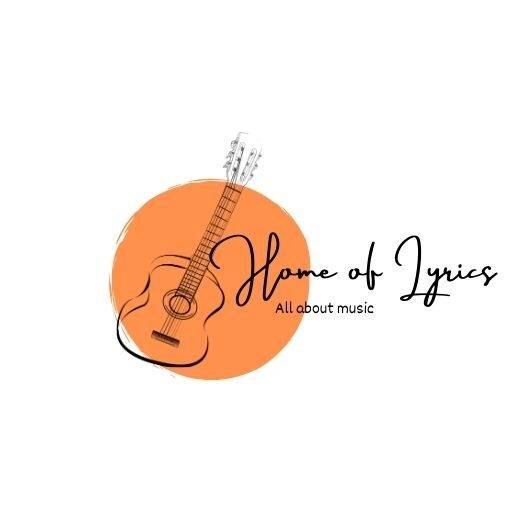


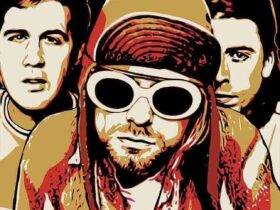


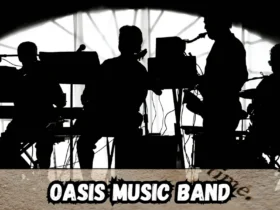

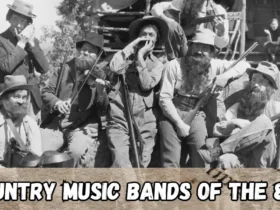

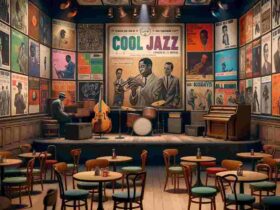


Leave a Reply